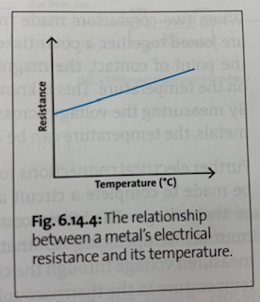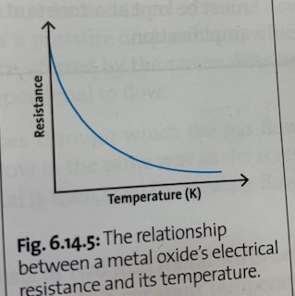R2i / 16A19: Describe the methods of temperature measurement
16A19: Exam Report
Describe the methods of temperature measurement.
36% of candidates passed this question.
A good answer included a definition of temperature and a classification of the methods of measuring temperature such as electrical, non-electrical and infrared. There followed a brief description of the physical principles of thermistors, thermocouples and resistance thermometers; mercury and alcohol thermometers, bimetallic strips; and of infrared methods.
Candidates who did well reproduced the content of the chapter on temperature measurement in the recommended text book. Candidates who were not familiar with this material attempted to answer the question by falling back on clinical experience of measuring temperature in different sites or occasionally referring to concepts of thermoregulation. Neither approach gained credit.
Some candidates interpreted “methods” incorrectly as “site of measurement” so scored poorly.
R2i / 16A19: Describe the methods of temperature measurement
Definitions
Temperature = Property of a substance, measure of average kinetic E of the substance. Determines which way heat travels
Thermometer = an instrument that measures the temperature of a system in a quantitative way by detecting changes in thermometric properties of substances.
Non Electrical
Liquid Expansion
Principle
Volumetric expansion/contraction of mercury/alcohol with Δ temp
Mechanism
Glass capillary tube
Connected to liquid (mercury/alcohol) reservoir
Heating reservoir causes expansion of liquid
Liquid moves up the tube alongside a calibrated scale
Temp read
PROS
Easy to read/use
Accurate for measuring body temp
CONS
2-3mins for complete thermal equilibrium
Glass can break
Mercury toxic
Alcohol
-115 → 80 C
low temps
less toxic
less durable, evaporates easily
Principle
Mechanism
PROS
CONS
Mercury
-38 → 357C
high temps
highly toxic
durable does not easily evaporate
Used in labs to measure temps of chemical reactions
Principle
Mechanism
PROS
CONS
Gas Expansion
Principle
Charles’ Law: at constant pressure, gas expands when heated
Mechanism
Bulb filled with a fixed volume of gas
Attached to a mercury manometer (wh measures pressure)
As temperature of gas increases so does its pressure
Pressure of system is then measured with aneroid gauge (ie Bourdon Guage)– to correlated with temp change
PROS
Used to calibrate thermometers
Sensitive and accurate over wide range of temps
CONS
Slow response time
Bulky
Bimetalic Strips
Principle
Metals have different coefficients of thermal expansion
Mechanism
2 dissimilar metals are bound together in a coil
In the middle of the coil is a pointer
As the temperature increases/decreases, the coil loosens/tightens and the pointer moves over the scale
NB coil loosens bc one metal will expand more than the other
PROS
Cheap
CONS
Slow response time
Limited accuracy
Electrical
Resistance Thermometers
Mechanism
Fixed voltage passed through a metal wire
Current that flows is measured
Resistance calculated using Ohm’s Law V = IR
A Wheatsone Bridge can be incorporated to improve accuracy
PROS
Can measure temp change as small as 0.0001C!
CONS
Slow response time
Bulky
Seldom used in clinical practice
Thermistor
Mechanism
A metal oxide is inserted into equipment (ie PAC)
The electrical resistance of metal oxide falls exponentially as temp increases
Wheatstone bridge is added to improve accuracy
R derived from Ohm’s Law
PROS
Small
Robust
Can be incorporated into many things (nasopharyngeal temp probe, PAC)
Fast response time
CONS
Require calibration
Drift
Thermocouples
Principle
Seekbeck Effect:
When two dissimilar metals are joined together a small potential difference occurs at the point of contact
Size of PD is temp dependant
Mechanism
2 dissimilar metals are joined
Voltage at the junction of two metals shows a potential difference – which depends on the temperature and so temp is measured
The temperature in the system is kept constant it is only the temp in the thermocouple that changes
PROS
Incoorporated into IV fluid warmers
Fast response time
Cheap
Small
CONS
Requires more complicated electronics
Circuit must be maintained at constant temp, only the thermocouple temp may change
Infrared
Infrared Ear and Tympanic Membrane
Principle
Wavelength and intensity of infrared radiation an object gives out varies with its temp
Mechanism
Small probe with a detector is inserted into ext auditory meatus
Detector receives infrared radiation from tympanic memb
Infrared signal converted into electrical signal
PROS
Fast – measures core temp accurately in 3 secs
CONS
Non-continuous readings
Probe must be aimed accurately at TM, ie wax can affect accuracy
- Author: Krisoula Zahariou

